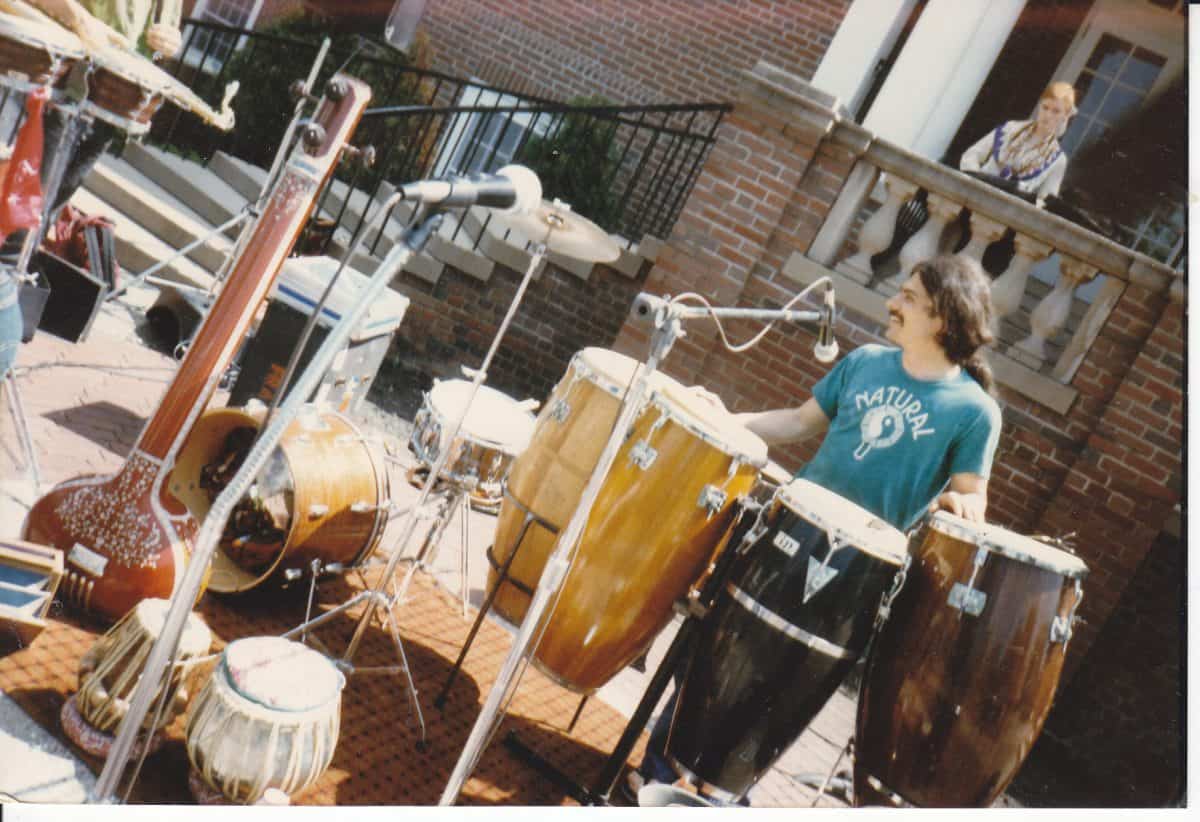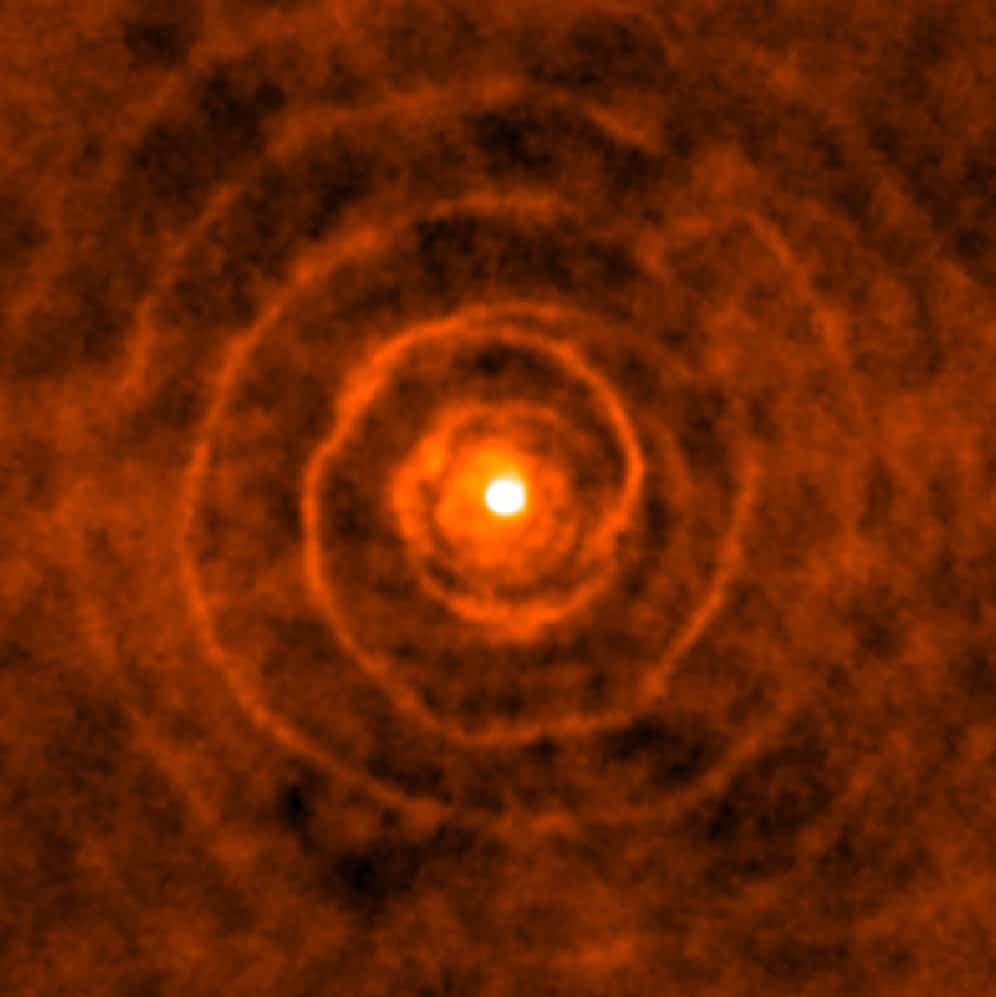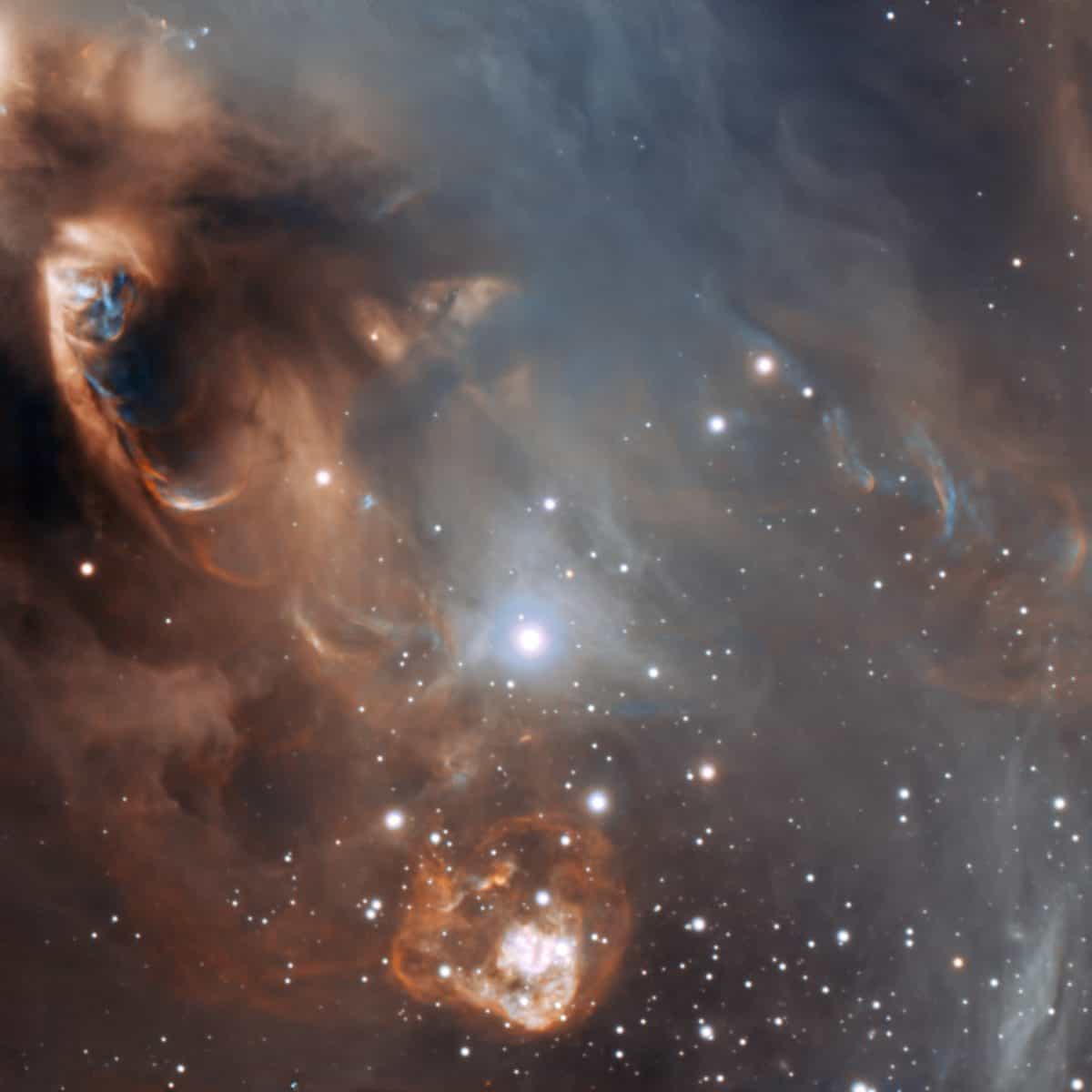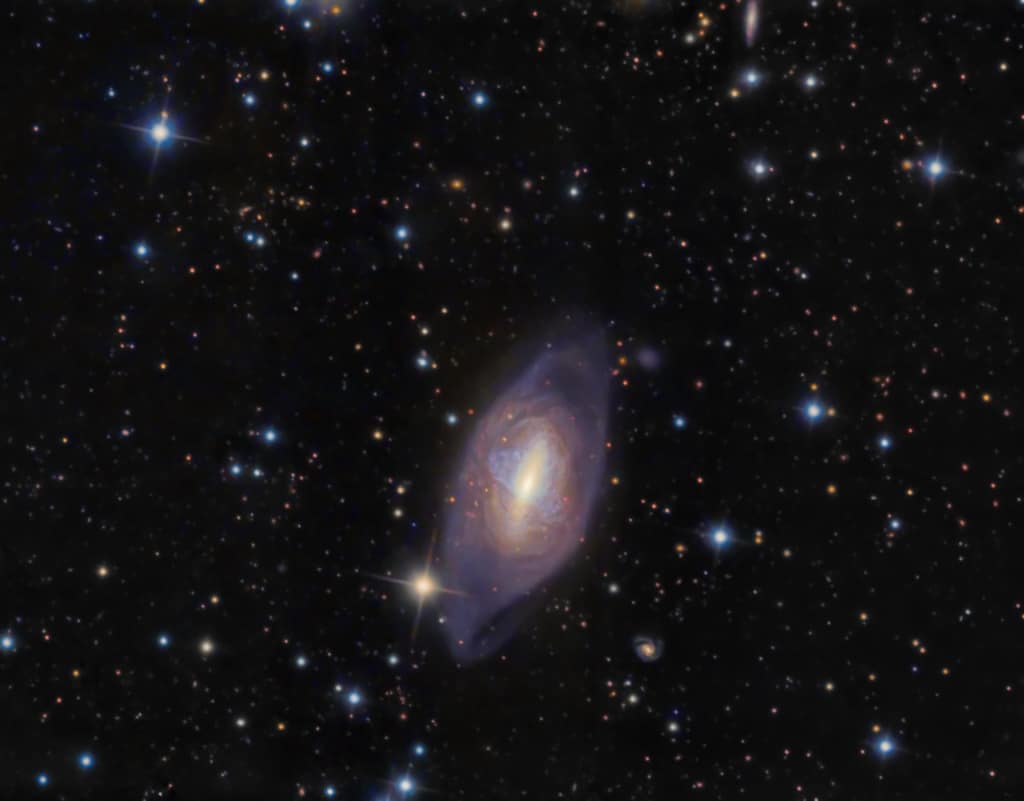Blog
Al Laurence Di Meola (born July 22, 1954) is an American jazz, jazz fusion, and world music guitarist. Albums such as Friday Night in San Franciscohave earned him both critical and commercial success with fans throughout the world.
Born in Jersey City, New Jersey, into an Italian family with roots in Cerreto Sannita, a small town northeast of Naples, Di Meola grew up in Bergenfield, where he attended Bergenfield High School. He has been a resident of Old Tappan, New Jersey.
When he was eight years old, he was inspired by Elvis Presley and the Ventures to start playing guitar. His teacher directed him toward jazz standards. He cites as influences jazz guitarists George Benson and Kenny Burrell and bluegrass and country guitarists Clarence White and Doc Watson.
Di Meola with Return to Forever at Onondaga Community College, Syracuse, New York, 1974
He attended Berklee College of Music in the early 1970s. At nineteen, he was hired by Chick Corea to replace Bill Connors in the pioneering jazz fusion band Return to Forever with Stanley Clarke and Lenny White. He recorded three albums with Return to Forever, helping the quartet earn its greatest commercial success as all three albums cracked the Top 40 on the U.S. Billboard pop albums chart. He could play so fast that he was sometimes criticized for playing too many notes.
more...Herman “Junior” Cook (July 22, 1934 – February 3, 1992) was a hard bop tenor saxophone player.
Cook was born in Pensacola, Florida. After playing with Dizzy Gillespie in 1958, Cook gained some fame for his longtime membership in the Horace Silver Quintet (1958–1964); when he and Blue Mitchell left that band, Cook played in Mitchell’s quintet (1964–1969). Later associations included Freddie Hubbard, Elvin Jones, George Coleman, Louis Hayes (1975–1976), Bill Hardman (1979–1989), and the McCoy Tyner big band.
more...At a young age, Deepak Ram’s reputation grew rapidly. Among his many laurels is the award for Best Instrumental Album, South African Music Awards 2000. Ram has collaborated with renowned musicians in a variety of genres from jazz pianist Darius Brubeck to Tunisian ud player Dhafer Yousseff. He has performed throughout the world, including South Africa?s Millennium Concert on Robben Island before such illustrious audience members as presidents Nelson Mandela and Thabo Mbeki. In addition to masterful composition, arranging and performance, Ram is also an accomplished teacher, most recently holding a post with the University of California, Santa Cruz.
more...Performing on congas and percussion Saturday July 21st 2018 9pm-1am
with Soul Tight Committee
at Bunkers Bar Minneapolis
more...
Although it looks like the pattern of a shell on the beach, this intriguing spiral is in fact astronomical in nature. The Atacama Large Millimeter/submillimeter Array (ALMA) captured this remarkable image of a binary star system, where two stars — LL Pegasi and its companion — are locked in a stellar waltz, orbiting around their common centre of gravity. The old star LL Pegasi is continuously losing gaseous material as it evolves into a planetary nebula, and the distinct spiral shape is the imprint made by the stars orbiting in this gas.
The spiral spans light-years and winds around with extraordinary regularity. Based on the expansion rate of the spiralling gas, astronomers estimate that a new “layer” appears every 800 years — approximately the same time it takes for the two stars to complete one orbit around each other.
LL Pegasi was first highlighted about 10 years ago when the NASA/ESA Hubble Space Telescope obtained a picture of the almost-perfect spiral structure. This was the first time a spiral pattern had been found in material surrounding an old star. Now, ALMA’s observations, of which this image only shows one “cross-section”, have added an extra dimension to reveal the exquisitely-ordered 3D geometry of the spiral pattern. A full view of the 3D video can be seen in this video.
An additional image shows a composition of the ALMA and Hubble data.
4,240 ly distance
more...Yusuf Islam (born Steven Demetre Georgiou; 21 July 1948), commonly known by his former stage name Cat Stevens, is a British singer-songwriter and multi-instrumentalist. His 1967 debut album reached the top 10 in the UK, and the album’s title song “Matthew and Son” charted at number 2 on the UK Singles Chart. Stevens’ albums Tea for the Tillerman (1970) and Teaser and the Firecat (1971) were both certified triple platinum in the US by the RIAA. His musical style consists of folk, pop, rock, and Islamic music.
His 1972 album Catch Bull at Four spent three weeks at number one on the Billboard 200, and fifteen weeks at number one in the Australian ARIA Charts. He earned two ASCAP songwriting awards in 2005 and 2006 for “The First Cut Is the Deepest“, and the song has been a hit for four artists. His other hit songs include “Father and Son“, “Wild World“, “Peace Train“, “Moonshadow“, and “Morning Has Broken“. In 2007 he received the Ivor Novello Award for Outstanding Song Collection from the British Academy of Songwriters, Composers and Authors.
In December 1977, Stevens converted to Islam, and he adopted the name Yusuf Islam the following year. In 1979, he auctioned all of his guitars for charity and left his musical career in order to devote himself to educational and philanthropic causes in the Muslim community. He was embroiled in a long-running controversy regarding comments which he made in 1989 about the death fatwa on author Salman Rushdie. He has received two honorary doctorates and awards for promoting peace from two organisations founded by Mikhail Gorbachev.
more...Conrad Yeatis “Sonny” Clark (July 21, 1931 – January 13, 1963) was an American jazz pianist who mainly worked in the hard bop idiom.
Clark was born and raised in Herminie, Pennsylvania, a coal mining town east of Pittsburgh. His parents were originally from Stone Mountain, Georgia. His miner father, Emery Clark, died of a lung disease two weeks after Sonny was born. Sonny was the youngest of eight children. At age 12, he moved to Pittsburgh.
When visiting an aunt in California at age 20, Clark decided to stay and began working with saxophonist Wardell Gray. Clark went to San Franciscowith Oscar Pettiford and after a couple months, was working with clarinetist Buddy DeFranco in 1953. Clark toured the United States and Europe with DeFranco until January 1956, when he joined The Lighthouse All-Stars, led by bassist Howard Rumsey.
Wishing to return to the east coast, Clark served as accompanist for singer Dinah Washington in February 1957 in order to relocate to New York City. In New York, Clark was often requested as a sideman by many musicians, partly because of his rhythmic comping. He frequently recorded for Blue Note Records, playing as a sideman with many hard bop players, including Kenny Burrell, Donald Byrd, Paul Chambers, John Coltrane, Dexter Gordon, Art Farmer, Curtis Fuller, Grant Green, Philly Joe Jones, Clifford Jordan, Jackie McLean, Hank Mobley, Art Taylor, and Wilbur Ware. He also recorded sessions with Charles Mingus, Sonny Rollins, Billie Holiday, Stanley Turrentine, and Lee Morgan.
more...Zani Diabaté, who died in 2011, was one of the great Malian guitar heroes who never quite made it in the west, despite his adventurous fusion of traditional styles and rock energy; he was compared to Hendrix when the exuberant album Zani Diabaté & The Super Djata Band was released here in 1988. But now his music and style are being resurrected, thanks to percussionist Bamba Dembélé, who played with him in Super Djata before joining the legendary Super Rail Band De Bamako, alongside drummer Maguett Diop and guitarist Moussa Diabaté – who now reappear alongside Dembélé in Bamba Wassoulou Groove. This is a band dominated by three guitarists, with Moussa taking the lead on new songs and old Super Djata favourites. On Farima he switches from a cool, drifting introduction to a driving solo, while Bina is a mellow workout featuring inter-twining guitars.
more...https://www.youtube.com/watch?v=pekCLrEUM00
more...This very detailed enhanced-colour image from ESO’s Very Large Telescope shows the dramatic effects of very young stars on the dust and gas from which they were born in the star-forming region NGC 6729. The baby stars are invisible in this picture, being hidden behind dust clouds at the upper left of the picture, but material they are ejecting is crashing into the surroundings at speeds of that can be as high as one million kilometres per hour. This picture was taken by the FORS1 instrument and records the scene in the light of glowing hydrogen and sulphur.
NGC 6729 is a reflection/emission nebula in the constellation Corona Australis. It was discovered by Johann Friedrich Julius Schmidt in 1861.
This fan-shaped nebula opens from the star R Coronae Australis toward the star T CrA to the south-east. R CrA is a pre-main-sequence star in the Corona Australis molecular complex, one of the closer star-forming regions of the galaxy at a distance of 130 pc.
more...Carlos Santana (born July 20, 1947) is a Mexican and American musician who first became famous in the late 1960s and early 1970s with his band, Santana, which pioneered a fusion of rock and Latin American jazz. The band’s sound featured his melodic, blues-based guitar lines set against Latin and African rhythms featuring percussion instruments such as timbales and congas not generally heard in rock music. Santana continued to work in these forms over the following decades. He experienced a resurgence of popularity and critical acclaim in the late 1990s. In 2003 Rolling Stone magazine listed Santana at number 20 on their list of the 100 Greatest Guitarists of All Time. He has won 10 Grammy Awards and three Latin Grammy Awards.
Santana was born in Autlán de Navarro, Jalisco, Mexico. He learned to play the violin at age five and the guitar at age eight under the tutelage of his father, a mariachi musician. His younger brother, Jorge Santana, would also become a professional guitarist. Young Carlos was heavily influenced by Ritchie Valens at a time when there were very few Mexicans in American rock and pop music.
https://www.youtube.com/watch?v=P8dGh1iEmCY&t=41s
more...Ernest Brooks Wilkins Jr. (July 20, 1922 – June 5, 1999) was an American jazz saxophonist, conductor and arranger who spent several years with Count Basie. He also wrote for Tommy Dorsey, Harry James, and Dizzy Gillespie. He was musical director for albums by Cannonball Adderley, Dinah Washington, Oscar Peterson, and Buddy Rich.
Wilkins was born in St. Louis, Missouri. In his early career he played in a military band, before joining Earl Hines‘s last big band. He worked with Count Basie from 1951 to 1955, eventually leaving to work free-lance as a jazz arranger and songwriter. His success declined in the 1960s, but revived after work with Clark Terry, leading to a tour of Europe.
more...World Music on Flamenco Fridays with Vicente Amigo.
Vicente Amigo Girol (born 25 March 1967) is a Spanish flamenco composer and virtuoso guitarist, born in Guadalcanal, near Seville. He has played as backing guitarist on recordings by flamenco singers El Pele, Camarón de la Isla, Vicente Soto, Luis de Córdoba and the rociero band Salmarina, and he has acted as a producer for Remedios Amaya and José Mercé. His album Ciudad de las Ideas won the 2001 Latin Grammy for the Best Flamenco Album and the 2002 Ondas award for the best Flamenco work.
more...NGC 2685 (also known as the Helix Galaxy or Arp 336) is a polar ring galaxy of about 50,000 light-years across, located some 42 million light-years away from Earth in the northern constellation of Ursa Major (the Great Bear). It is receding from us at approximately 883 kilometers per second.
The name “Arp 336” derives from being included in Arp’s Atlas of Peculiar Galaxies, a catalog of 338 peculiar galaxies, drawn up by Halton Arp in the years from 1962 through 1967 and published by the California Institute of Technology.
A polar-ring galaxy is a rare type of galaxy in which an outer ring of gas, stars and dust orbits in a plane almost perpendicular to the normal flat plane of the galaxy. These polar rings are thought to form when two galaxies gravitationally interact with each other. One possibility is that material is tidally stripped from a passing galaxy, with the captured debris strung out in a rotating ring. The other possibility is that a smaller galaxy collides perpendicular with the plane of rotation of the larger galaxy, with the smaller galaxy effectively forming the polar ring.
In the case of NGC 2685, several thin filamentary strands, consisting of knots of luminous star-forming regions and hydrogen gas form a helical band perpendicular to the main disk and centered on the galactic nucleus. These structures suggest that NGC 2685 once had a much smaller companion that was captured into a polar orbit and had its stars eventually merged with those of the larger system, leaving behind the companion’s interstellar medium. New generations of stars formed from this material to produce the luminous ring seen today.
The rotating ring of NGC 2685 is found to be remarkably old and stable. It is possible that if the Magellanic Clouds had been closer to the Milky Way, they too would have created a polar ring around our galaxy.
In this image, the strange, perpendicular rings are easy to trace as they pass in front of the galactic disk, along with other disturbed outer structures. NGC 2685 is seen amidst lots of foreground stars and background galaxies.
more...Phil Upchurch (born July 19, 1941, Chicago, Illinois) is an American blues, jazz and R&B guitarist and bassist.
Upchurch started his career working with the Kool Gents, the Dells, and the Spaniels before going on to work with Curtis Mayfield, Otis Rush, and Jimmy Reed. (His association with Kool Gents member Dee Clark would continue, including playing guitar on Clark’s 1961 solo hit “Raindrops“.) He then returned to Chicago to play and record with Woody Herman, Stan Getz, Groove Holmes, B.B. King, and Dizzy Gillespie.
more...William C. “Buster“ Bailey (July 19, 1902 – April 12, 1967) was a jazz clarinetist.
Buster Bailey was a master of the clarinet and was educated on the instrument by classical teacher Franz Schoepp, the man who taught Benny Goodman. Bailey got his start with W.C. Handy’s Orchestra in 1917 when he was just fifteen years old. After two years of touring with Handy, Bailey quit the orchestra while the band was in Chicago. In 1919, Bailey joined Erskine Tate’s Vendome Orchestra and remained with Tate until 1923 when he joined up with Joe “King” Oliver. As a member of King Oliver’s Creole Jazz Band, Bailey met and became friends with Louis Armstrong, who was also a member of the band at that time. In 1924, Armstrong left King Oliver’s Jazz Band to join Fletcher Henderson’s Orchestra in New York. Within a month Armstrong extended an invitation for Buster Bailey to join him as a member of Henderson’s band. Bailey accepted and moved to New York City.
more...a band formed by South American expats from Argentina and Colombia living in Spain. Che Sudaka is known for its lively shows and party-like atmosphere, where the band mixes accordion-fueled Colombian cumbia, ska, pop, rock, Andean folk music, Brazilian beats and other musical forms.
more...More Posts
- Heitor Villa-Lobos Day
- World Music with Maria Mazzotta
- Daily Roots with Cornell Campbell
- The Cosmos with NGC 5394/5
- Ricky Ford Day
- Jan Garbarek Day
- Miriam Makeba Day
- Willie Johnson Day
- Antonio Vivaldi Day
- World Music with Rahim AlHaj
- Daily Roots with Barry Brown
- The Cosmos with the Milky Way & Kepler 32
- Jimmy Garrison Day
- Dupree Bolton Day
- Doc Watson Day
- World Music with Sangit & Kadi Coulibaly
- Daily Roots with Horace Andy
- The Cosmos with Sharpless 308
- Larry Carlton Day
- Lou Reed Day



